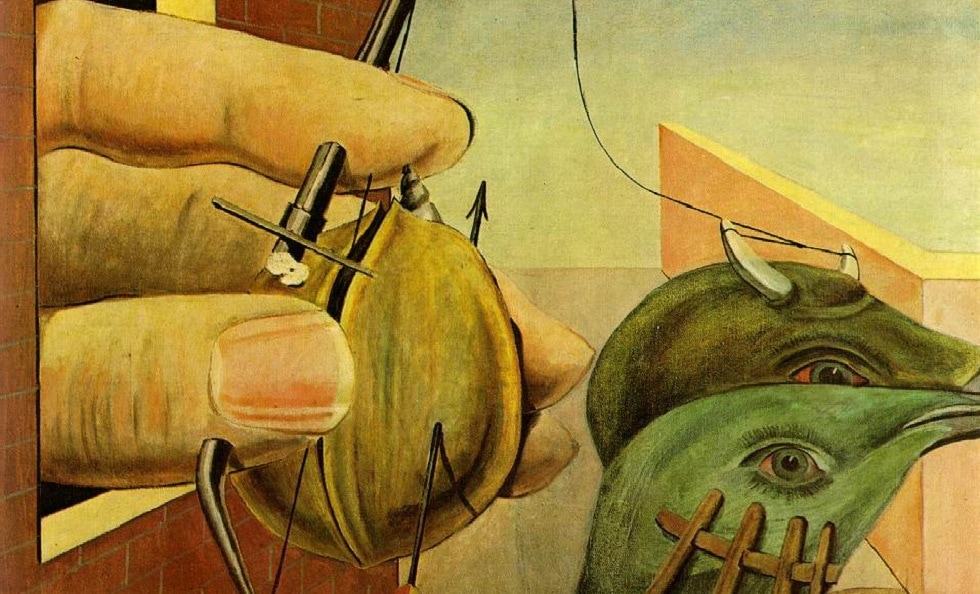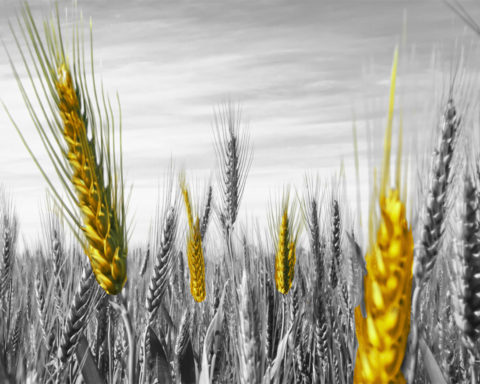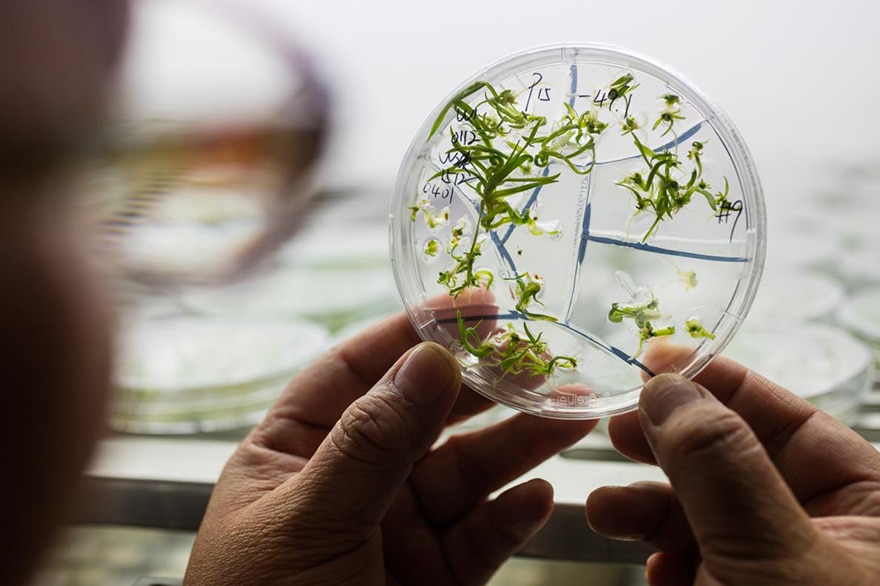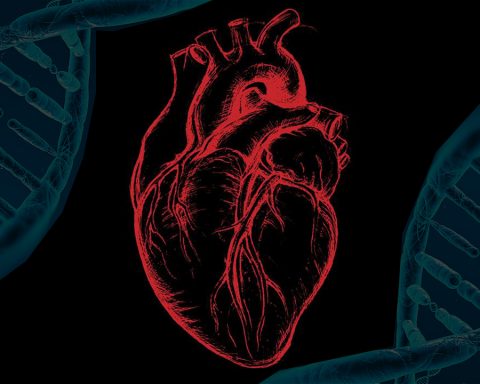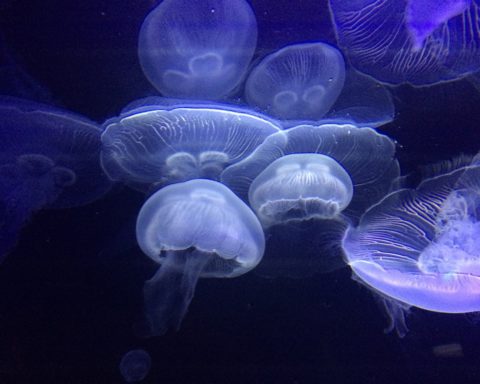While innovation is today a major focus of public and private action, science, once synonymous with progress, has become a source of anxiety for many citizens. As part of the Knowledge Metropolis approach, which aims, among other things, to promote dialogue between science and society, Greater Lyon is looking into the imagination of the sciences, in particular the biosciences, which are very present on its territory. Science and technology have nurtured many imaginations that shape the way we imagine the world.
Based on the exploration of a number of science fiction works - especially films - this report deciphers ten imaginary worlds (end of the world, contagion, immortality, mastery, privatization of the world, mutation...).
Illustration: "Oedipus" - Max Ernst 1922 (detail)
Here are gathered ten imaginary worlds associated with science and technology. To describe and illustrate them, we have given priority to works of science fiction - mainly cinema films - without, however, prohibiting us from drawing on the press. Finally, we thought it would be interesting to show as clearly as possible how the imaginary worlds described could sometimes refer to recurring questions about human cultures.
 What is imagination?
What is imagination?
Imaginary, adj: "Which is created by the imagination, which exists only in the imagination."
Imaginary, name: "Domain of the imagination". Larousse
(Illustration: Max Ernst - Collage)
Distinguish between imagination and fantasy
Adjective or noun, the two definitions given by the Larousse of the term imaginary make imagination the key to its understanding. Yet... let us mirror two expressions that use the first, "imaginary" as an adjective, and the second, "imaginary" as a noun. "Imaginary city" | "Imaginary city". In the first formula, the imaginary city is indeed the city produced by the faculty of imagination. But, the second expression which designates the imaginary of the city seems to carry a much wider meaning.
Even without a definition of the imaginary, intuitively, one can feel the difference. There is more in the city's imagination than just the mobilization of the faculty of imagination. The imaginary of the city also integrates elements of reality, or more precisely elements of reality as it is represented. We hear clichés, images, sounds, smells, sensations, a set of mental, affective and almost sensitive data. The content of these elements is different when they are summoned to illustrate our idea of Paris rather than Tokyo, Moscow or New York or generic cities such as the industrial city or the post-apocalyptic city. It is in this sense that we place ourselves here to designate the imaginary of science and technology.
Invariance or historicity of the imagination?
Let's leave the everyday language and enter the field of specialised language. What do the seekers of the imagination? We shall confine ourselves to highlighting a fault line between two conceptions. Structuralists such as Claude Lévi-Strauss and Georges Dumézil, philosophers such as Gaston Bachelard and Gilbert Durand, and psychologists such as Carl Jung in particular, to name but a few, have proposed different conceptions of the imaginary that have in common to refer to invariants. The imaginary would thus represent archetypes or large, quasi-fixed categories of the appropriation of the world. On the other hand, historians, notably from the Annales school, such as Jacques Le Goff, interested in the history of ideas, have proposed to understand the imaginary as the products of a particular culture and therefore historically dated. Today, authors such as Lucian Boia, historian, or Jean-Jacques Wuneburger, philosopher, propose to articulate both aspects. How can this be done? By positing that the imaginary is the particular actualization of an archetype. For example, the fear of destruction that is found in many eras and cultures on the planet can take on very diverse aspects. It may be the flood in Babylonian or biblical culture, when the 20th century represented it more in the form of a nuclear apocalypse. "Structural fixity over cultural and chronological divisions," writes Lucian Boia.
Imagination is plural because it touches different themes, cultures and individuals. There is an imaginary of the city, of science, of nature, etc. These imaginaries themselves vary according to cultures, i.e. according to times, places but also individuals and identities. Finally, there are imaginaries linked to personal imaginaries, specific to each person's culture and sensibility. Within this variety, we can distinguish an imaginary of technology and science, which is defined as a set of more or less explicit references that shape our vision of technology, either negatively or positively.
 The role of (science) fiction
The role of (science) fiction
©Cnarzy Robert
Experiment virtually
Science fiction can also be the virtual place to conduct thought experiments. Here, "science fiction is a form of mental experimentation whose results can be taken into account, discussed and debated; [...]". Fiction sets a framework, a setting, then plays with scenarios, tests hypotheses, sets up answers to ethical questions. The sociologist Cédric Polère says that it allows us to "identify alternatives and solutions to problems. This function, under-used, is implemented for example at the Université du Québec à Montréal (UQAM). The Chair of Social Responsibility and Sustainable Development has initiated a project that searches in science fiction for paths to alternative societies capable of solving ecological challenges.
Testing Relationship Patterns
In these experimental games, it becomes possible to test the relations between man and his environment, whether technical, scientific or social... This dimension of science fiction is, for example, particularly important, as we have just seen, to try to define the links that man can have with technology and in particular with the figure of the robot.
Frightening and playing a precautionary function
Many science fiction stories, and of course many more in the realm of horror, are intended to instil fear. Some of these stories are about contemporary fears, others about fears that we project into the future, for example the fear of the reversal of the man/machine relationship.
Anticipating the future and working in a forward-looking way
Generally speaking, these different functions are all, or almost all, a way of anticipating the future, of developing possible, even probable scenarios. Some represent desirable futures, but which we have yet to tame, others allow us to understand the changes at work and the mutations that may affect us, still others allow us to give meaning to these possible futures or to build new rules, etc. These stories contribute to the creation of a common imaginary, a kind of shared icono-verbal language from which to prepare the future. In these cases, it can be said that anticipatory fiction, and particularly science fiction, is a means of "preparing for change". Others among these possible futures will not appear as desirable. Works of fiction and especially science fiction, functioning as "exploratory devices", then highlight the harmful consequences.
 Imagination in Mutation
Imagination in Mutation
The imaginary of mutation developed during the 20th century, in connection with the progress of biology and in particular that of genetics. It is therefore recent. However, if we are willing to accept the principle that a strong modern imagination is never but a renewed form of an older theme, we can make our own the idea that "the mutant seems to be the contemporary form of metamorphosis and monstrosity" 70. 70 But although it unquestionably refers to the monster, the imaginary of mutation is not all negative. It is undoubtedly one of the most ambivalent as it can, on the contrary, be positive.
This ambivalence reflects the random nature of the mutation: a sort of lottery that you don't win every time. Sometimes it's a monster that comes out of the evolutionary hat or the test tube, sometimes it's a hero that is born into the world. Each time however, it is indeed a rupture in the natural order that we are witnessing, and a major anthropological rupture when it affects humans, as in the Marvel universe and the XMen.
Loss of identity and degeneration
Mutation can be the result of natural hazards, exposure to harmful substances - such as X-rays, Gama rays, etc. - or the effects of other factors. (The Incredible Hulk, Louis Leterrier, 2008, USA), bio-toxic waste (DaredevilMark Steven Johnson, Mark Steven Johnson, 2003, USA), or nuclear (see contamination), etc. -or genetic manipulations. But whatever the origin, the fruit of these mutations often refers to the monstrous. Physical monstrosity, as in Hulk, The Mutant (Species, Roger Donaldson, 1995, USA), or Splice (Vincenzo Natali, 2010, FR/CA). Moral monstrosity, as in the case of the "super villains" of the Brotherhood of Bad Mutants who oppose the super heroes of the Marvel universe. These "villains" are indeed ready to exterminate mankind to usher in the new era of the mutant, the highest level of evolution.
Mutation is a leap out of the species and in that it presents uncertainties. He who mutates is touched by a radical otherness, he becomes the Other of man. Thus Hulk is he less Bruce Baner's alias than his Other, and the schizophrenic struggle between man and mutant is one of the threads of the story created by Stan Lee and Jack Kirby in 1962. In District 9 (Neill Blomkamp, 2009, ZA), aliens are parked in a refugee camp in South Africa. Abused, undernourished, left in the hands of mafias and humiliated by men, they are exploited by the Multi-National United (MNU) company for which Wikus Van der Merwe works. Infected by an extraterrestrial fluid, he undergoes a mutation that, after a few days, will lead him to turn into an alien. This process of forced physical transformation is accompanied by an awareness of the condition of the aliens. We then witness a psychological and moral path operated under the effect of the physical mutation that leads the hero to get closer to those he had mistreated to the point of risking his life for them. Likewise, the X-Men as Chris Clarmont's evolution from 1976 onwards is edifying of a struggle, no longer individual but collective, for or against mutation. A metaphor for both the Apartheid regime and Nazism, the state of Genosha, located on an eponymous island in the Indian Ocean, organized the segregation between humans and mutants. The latter are enslaved and their population is controlled. The mutant is another human being who must be stripped of all humanity. In the film X-Men (Bryan Singer, 2000, USA), humanity is facing a period of change. Many children have an X gene that sets them apart. In the background of the action film, X-Men thus proposes a reflection on the way of considering otherness, on the welcome given to a new "version" of man. "If ecological eschatology maintains the principle of the destruction of man through the destruction of his environment, in most pessimistic narratives, the species survives but is transformed or replaced by beings that it has manufactured itself. The fear of material destruction gives way to the fear of the loss of a hypothetical essence or identity, the fear of a denatured humanity in which we, creatures of the beginning of the third millennium, can no longer recognize ourselves".
Homo superior and regeneration
Exactly opposite this darker side of the imaginary of mutation is a brighter side. In this optimistic tale, sometimes found in the same stories as those previously mentioned, mutation is inevitable for humanity and a possible happiness. For if the meaning of evolution is well given, what is not is the values that will triumph.
The dream cherished by Professor Charles Xavier in the saga X-Men is to protect men from their own fears in order to bring peace between them and mutants. Here mutants are no longer necessarily terrifying. They are an Other, of course, but they are "our" Other, the image that the future has of ourselves. Ultimately, mutants no longer represent a rupture but a continuity, they refer to a more accomplished version of man and therefore to a scenario consistent with the idea of evolution understood as progress.
Controlling the principle of evolution
If the mutation is scary, it's associated with chance. In the imagination, reducing the fear and taming the mutation involves trying to control the process so that it is no longer a lottery but a scientific project. The philosopher of science Thierry Hoquet speaks on this subject of "the hope of mutation".
Unfortunately for humanity, says the fiction, many cases of monstrous mutations (Splice or The Mutant) are the result of genetic manipulation. These stories then tell us about the failure of the scientific process that sought to control it, the mutation and unconsciousness of a species that puts itself in danger by causing the peril it wanted to avoid. Close to this imaginary failure of control, we still frequently find the theme of mutation linked to the scientific accident. Fiction is rich in examples of viruses or serum (see Contagion) which have the effect of transforming men into mutants that the imagination, however, more often associates with zombies or the living dead.
In order to escape natural hazards, humanity is "tinkering" with its genetic heritage to such an extent that, for Thierry Hoquet: "It could be that the concept of do-it-yourself could serve as the basis for a new technical utopia, insofar as it suggests that technology, in its progress, advances like evolution, in small blind steps, equivalent to the random mutations of natural selection". The imagination of biotechnological do-it-yourself is embodied in the recent practice of what is called "garage biology". The term "refers to amateurs who, without necessarily having malicious intentions, seek - most often outside official research institutions - to create biological organisms out of curiosity or out of a desire to demonstrate their capacity. Their motivation can be considered comparable to computer hackers operating without any malicious intent. In the United States, in particular, these individuals are considered part of an informal community called DIY (Do It Yourself).
There are also "community biotech labs" promoted by regulatory authorities such as the Institutional Biosafety Commission (IBC) and oversight bodies, such as the FBI, to promote DIWO "Do it with others". These labs would allow better control of "do-it-yourself" activities and could become places of innovation.
 |
 |
 |
 |
 |
 |
To go further:
- Exhibition "Imagine the Imagination" until February 11, 2013 at the Palais de Tokyo.
– Centre de recherche sur l'imaginaire, CRI (Exhibitions, Study Days,...)
– The European Notebooks of the Imaginationfounded by Michel Maffesoli and Gilbert Durand.
(Dossier directed by Ludovic Viévard / Millennium3 – 2012)
{Jacuzzi on}

